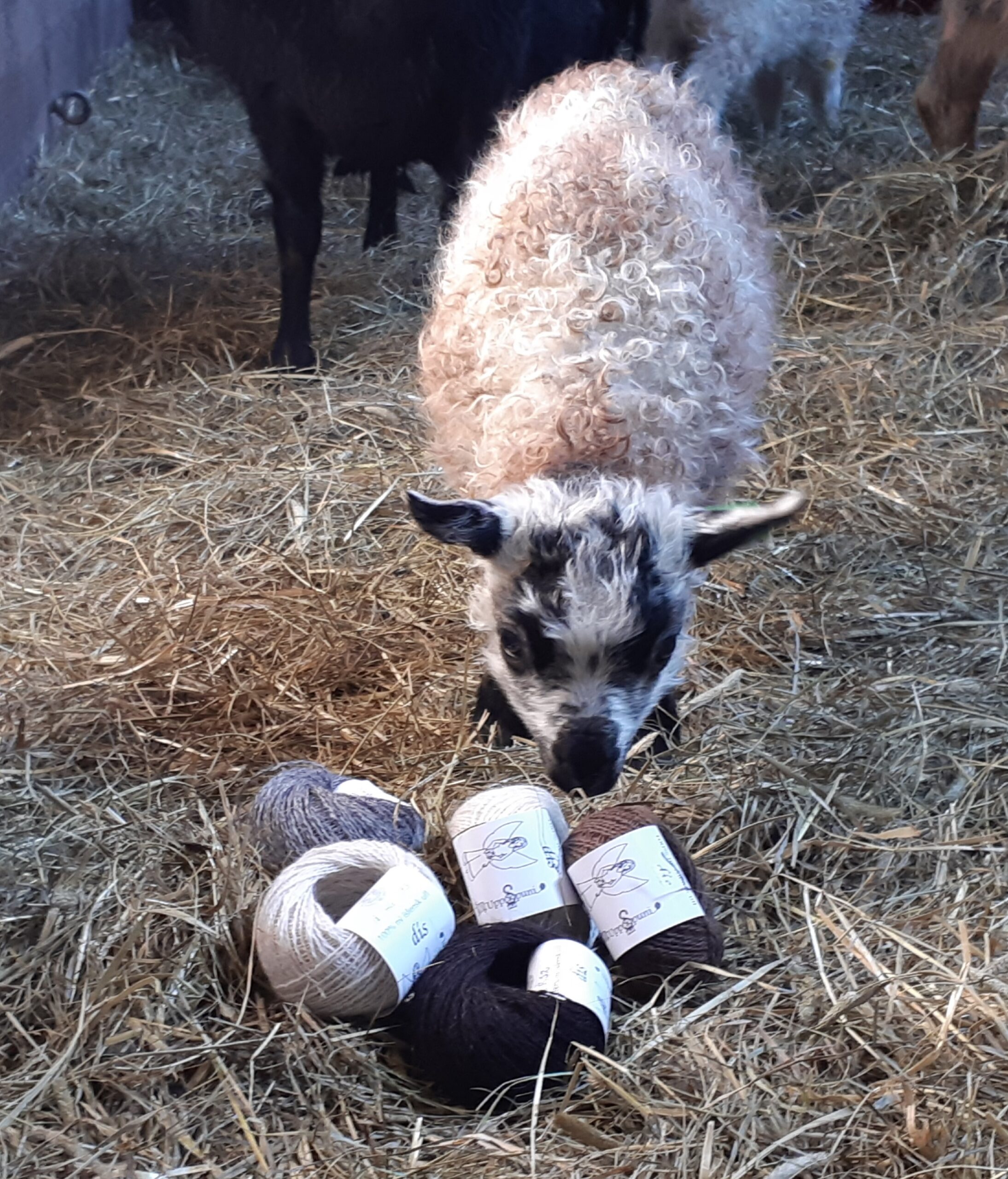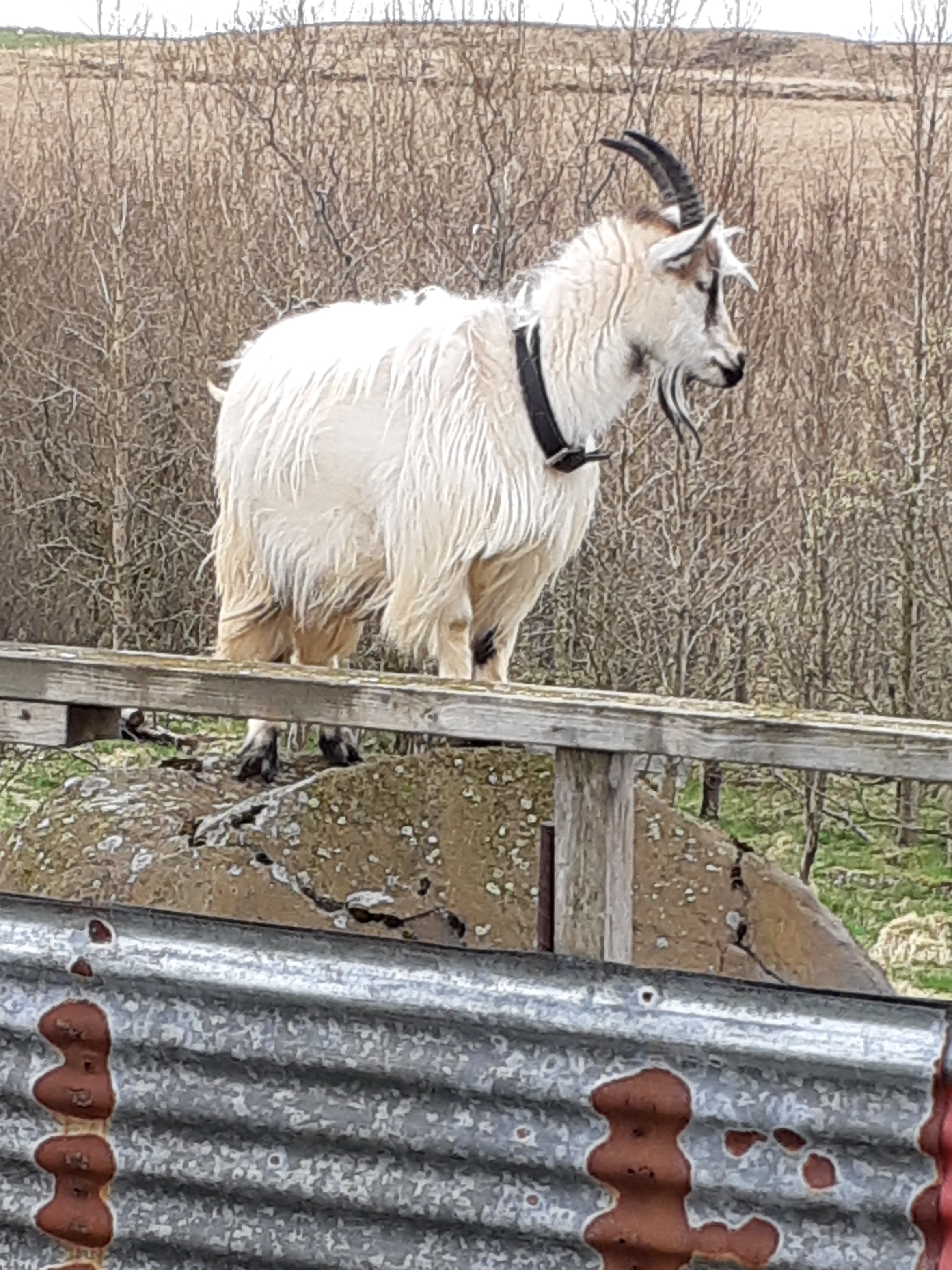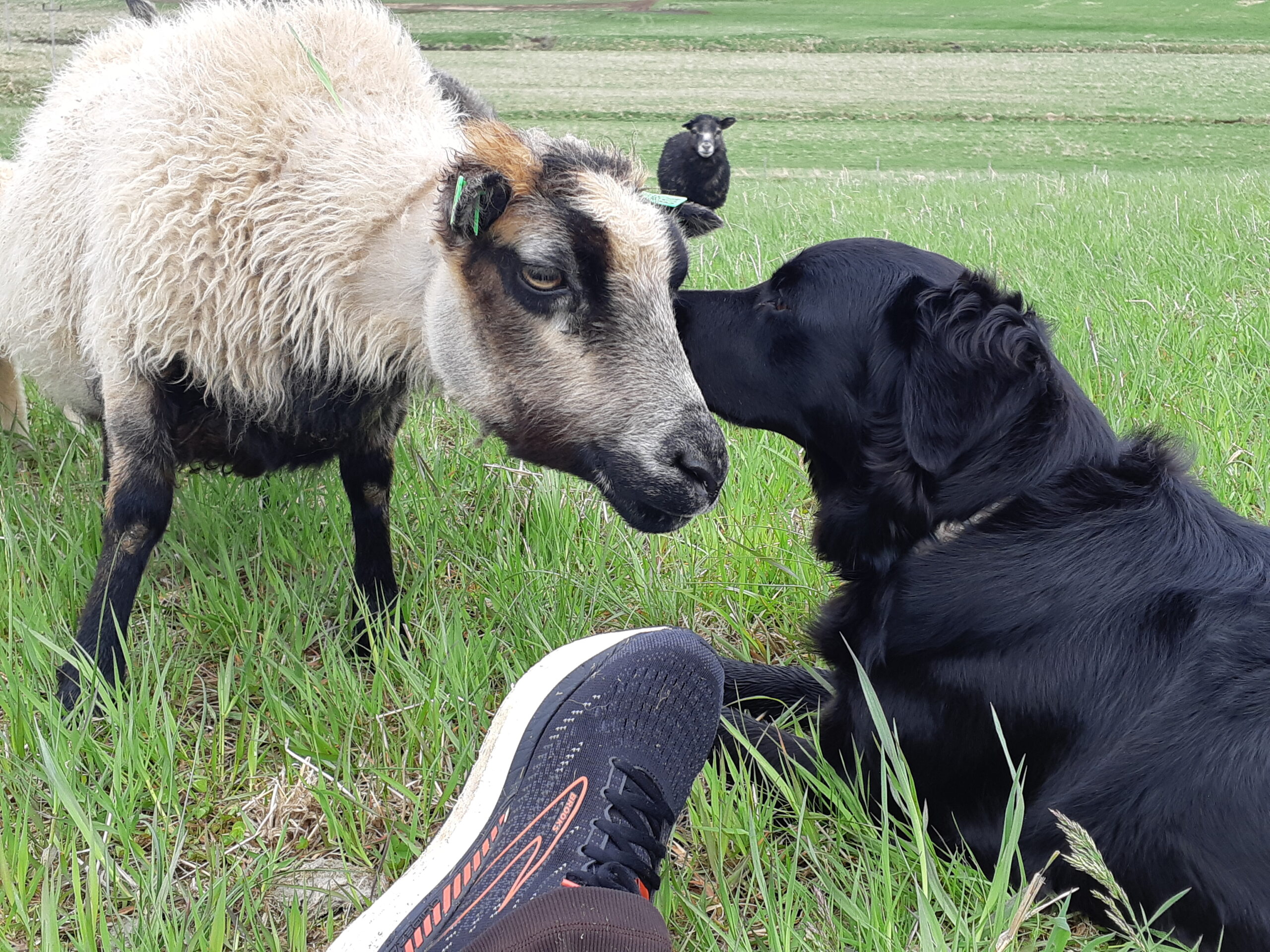- 14.04.22
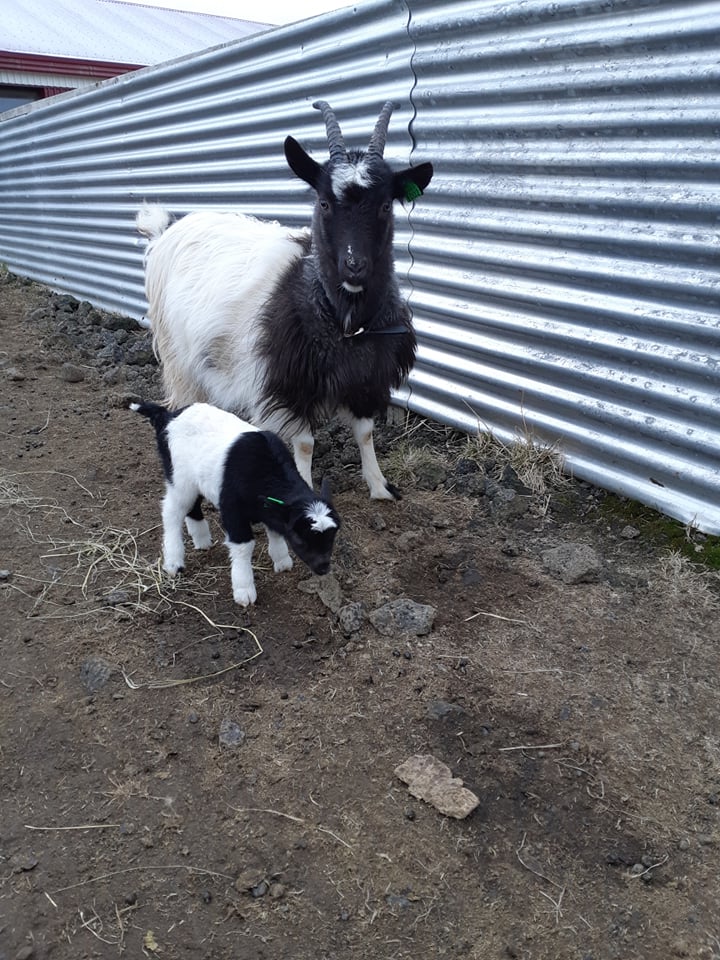
We are goat farmers
When we started thinking about putting up a mini mill in Iceland, back in 2016, we were contacted by goat farmers and asked if we would also consider to process the fibre from goats into yarn. We learned from them, that they had sent their fibre to similar mill in Europe to get it processed, so we knew the machines were able to do the job. So we said “yes”.
The machines arrived and we got a very nice teacher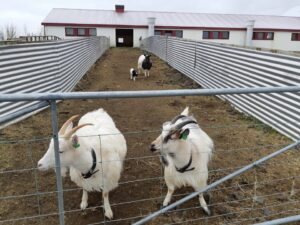 from Canada to train us with the process and we learned a lot and practised even more. After few months another teacher came from Canada and taught us more. Then we learned how to work with the fibre from the Icelandic goats and found out that it’s fibre is Cashmere,- which technically is the gold of fibres. The yarn we made was of something else than we had ever experienced,- then I am talking about yarn in general, not what we had been doing just for few months time. But even though I am brought up on a farm and so is my husband, we had neither of us ever farmed with goats and we knew so very little about them. When people started asking us questions about how to get the best fibre from them, our eyes turned gloomy and we just looked up to the sky. And since we are always eager to do as well as we can and not jump to conclusions without exactly knowing how or why something is like it is, we started exploring and looking for information. First on the internet and then with books. None of them in Icelandic.
from Canada to train us with the process and we learned a lot and practised even more. After few months another teacher came from Canada and taught us more. Then we learned how to work with the fibre from the Icelandic goats and found out that it’s fibre is Cashmere,- which technically is the gold of fibres. The yarn we made was of something else than we had ever experienced,- then I am talking about yarn in general, not what we had been doing just for few months time. But even though I am brought up on a farm and so is my husband, we had neither of us ever farmed with goats and we knew so very little about them. When people started asking us questions about how to get the best fibre from them, our eyes turned gloomy and we just looked up to the sky. And since we are always eager to do as well as we can and not jump to conclusions without exactly knowing how or why something is like it is, we started exploring and looking for information. First on the internet and then with books. None of them in Icelandic.
You see; the Icelandic goat was nearly extinct around the 1960’s. No one was really interested in farming with them and most people looked at them as pets and of no use but making problems – crossing every fence and eating every flower and tree. Then Jóhanna Bergmann Þorvaldsdóttir in Háafell went into mission to save the Icelandic goat. She earned a lot of attention doing so, and people joined her, getting goats of their own and formed an organisation around them. Since then people are starting again to use what the goat provides, like the milk and the fibre. And today we have over 1.500 goats in Iceland. They are an endangered specie and need to be observed and cared for to keep their number.
So our search for information about goats in Iceland was by talking to Jóhanna and others who had goats and observing the fibre we got to process in our mill.
We very soon decided that if we would want to be able to inform others about how to handle goats, we would have to learn it first hand. You can understand where we are heading, right?
We got our own baby-goats,- (they are called kids). And when a goat gives birth; she kids. I find it a bit amusing.
We got 4 females and 1 male in September 2021 and headed into the winter, learning by books how to feed them and keep them healthy. Sadly one got hurt and died from her injuries, but the other were fit and healthy and quite funny to work with. I taught them to be led around the house, and outside, when the weather was good and they are pretty fast learners, I must say.
Now we have experienced the birth of our very first kid,- you know, like ever!!! And it was a success, I mean it is alive and healthy and already started to jump around, and the young mother is such a big mama, which is also an advantage. I can hardly wait for the other two to kid.
I have learned a lot 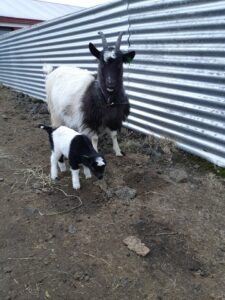 already, but still have a lot to learn. In the future, it would be amazing to have my own goat cheese for example, but for now, this little guy is going to have all the milk his mother provides.
already, but still have a lot to learn. In the future, it would be amazing to have my own goat cheese for example, but for now, this little guy is going to have all the milk his mother provides.
My animals ALL have names. All my 150 sheep, All my 30 cows, All my 16 hens… and of course the goats also have names,- when they are adult and to be kept on at the farm. This mama-goat’s name is Hrefna and since this is the very first goat to be born here, his name has to be Prince; Prins in Icelandic.

